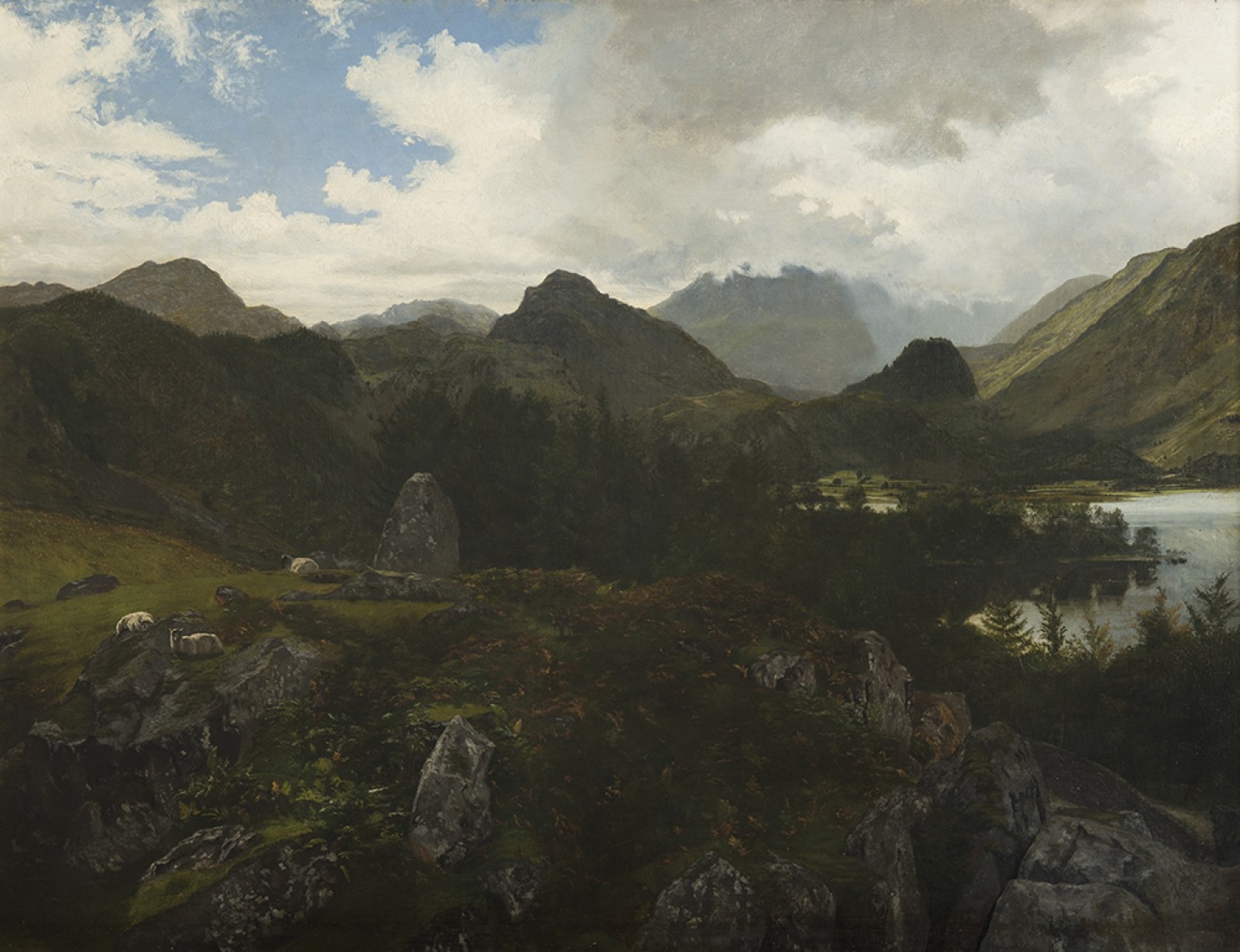DESCRIPTION
This oil painting by English-born landscape artist Samuel Bough (1822–1878) depicts two majestic trees, surrounded by smaller trees and grazing sheep, bathed in the warm light of a summer evening. The scene was painted in Cadzow Forest, South Lanarkshire, Scotland. At the time, Cadzow was part of the hunting estates of the Dukes of Hamilton, though it is now part of Chatelherault Country Park. The series of works Bough created there, including this painting, marked a turning point in his career, with favourable press attention heralding them as some of his finest pieces. Bough specialised in landscapes like this one and had a particular passion for capturing the dramatic elements of nature, as demonstrated in this evocative portrayal of the setting sun illuminating the trees. He would have painted such scenes after long periods spent wandering the countryside, endeavouring to capture the ever-changing effects of sunlight and weather phenomena.
DETAILS
-
Artist
Samuel Bough
-
Date
1877
-
Medium
Oil on board
-
Object number
98
-
Dimensions unframed
33.7 × 26.6 cm
-
Dimensions framed
41.5 × 18 cm
-
Place depicted
Cadzow (2654102)
-
Marks
Signed and dated bottom left
-
Subject
ARTIST PROFILE
Samuel Bough RSA, 1822-1878
Theatre scene painter, watercolourist and oil painter, Bough specialised in landscape and coastal and harbour scenes. A fine draughtsman, he delighted in portraying the dramatic in nature, be it a raging sea or a brilliant sunset. He had an excellent memory for details and effects. He also had a phenomenal speed of execution. A true bohemian, Bough was a rough diamond. He was intelligent and witty, but was often boorish and argumentative. Although he travelled through France, Belgium, The Netherlands, Norway and Germany, he considered that nothing could compare with Scotland's east coast or the English Lake District.
Born in Carlisle, Bough was encouraged by his shoemaker father to develop his artistic skills. Although he had lessons from several local artists, he was largely self-taught through studying the work of such painters as Constable, Turner or Copley Fielding. A job as a lawyer's clerk did not last long. He preferred sketching, wandering the countryside, often for weeks on end, attempting to capture he varying effects of sunlight, clouds, wind and rain.
In 1845 Bough went to Manchester as a scene painter at the new Theatre Royal, and three years later he moved to Glasgow as chief scene painter at the new Prince's Opera House. The turning point in his career came in 1849 when, following very favourable press comment, he produced some of his best work in Cadzow Forest. Following a short spell in Port Glasgow where he experimented with marine painting, he relocated to Edinburgh in 1855, remaining there for the rest of his life and achieving considerable success. He was elected an Associate of the Royal Scottish Academy in 1856, but conflict with the academy on several occasions meant that he had to wait nineteen years before being made a full Academician.






